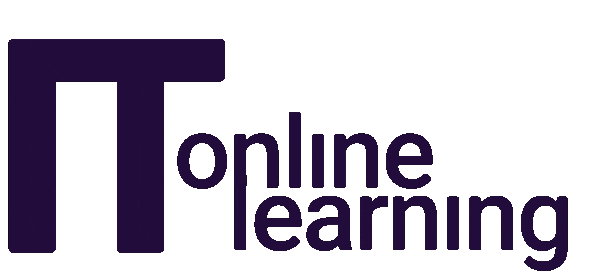Gender diversity in the workplace is something many have been trying to improve for years, but there is still a long way to go, especially in the IT industry.
Despite substantial progress, women still make up a fairly small percentage of the IT sector. According to Tech Nation, just 19% of the IT workforce are women in the UK. Worryingly, at its current pace of change WomenTech Network estimates it will take over 133 years to close the economic gender gap.
Why are there so few women in IT?
Inequality starts young. In schools, boys are more likely to choose STEM (Science, Technology, Engineering and Mathematics) subjects than girls, but this gender gap is not about ability. According to Women in Stem, girls are now outperforming men and boys in all STEM subjects.
So, what’s stopping women and girls from pursuing a career in IT? Some people still associate IT fields with being male whereas humanities and arts subjects are seen as female. Gender bias is common, from the clothes children wear to the toys they play with, and this can influence what an individual believes they should be doing, rather than what they can do.
The shortage of women in IT is also due to the lack of role models for women within the IT sector. Although there has been an increase in women entering into higher-level technology roles, women remain in the minority and many tech companies are still very male-dominated, especially at senior levels.
The fewer women there are with IT qualifications, the smaller the talent pool to choose from, making it more difficult to recruit women, which fuels a vicious circle.
Why do we need women in IT?
There has been a significant skills shortage in the IT industry for a while. The Harvey Nash Group Digital Leadership Report, in collaboration with CIONET and the Massachusetts Institute of Technology CISR, found that significant skills shortages in the IT and technology sector have reached an all-time high, just as companies across the world plan to increase technology investment to record levels.
Businesses simply need more qualified staff, and the industry needs to tap into this underrepresented demographic. Dame Stephanie Shirley CH FBCS, Pioneering IT entrepreneur and philanthropist told BCS, The Chartered Institute for IT:
“We need more women in tech because we need more people in tech. All predictions are for a massive shortfall of STEM graduates.”
Dame Stephanie Shirley CH FBCS, Pioneering IT entrepreneur and philanthropist
Therefore, anything we can do to improve the number of people in this sector is undoubtedly an advantage to everyone. Many studies show that diversity in companies is also important for progress. Research conducted by Harvard found that gender diversity results in a more productive and innovative working environment, which benefits the business. A report by McKinsey even goes as far as saying that companies in the top quartile for gender diversity on executive teams were 25% more likely to have above-average profitability than companies in the fourth quartile. In addition, having a diverse team also comes with multiple perspectives that can only bring benefits, especially if you have representatives of your target audience within your team. Rubi Kaur FBCS, Senior Solutions Architect at Vodafone stated in a BCS article:
“Women in the tech industry are important for a whole number of reasons, especially when it comes to designing and developing products and services. We build for all society, understanding their requirements to build meaningful, responsible technology.”
Rubi Kaur FBCS, Senior Solutions Architect at Vodafone

How bad is the current situation?
There are 239 billion-pound venture capital-backed companies around the world, yet less than 25 have a female founder, Pitchfork reveals.
Research by cloud talent creation firm Revolent has revealed that the percentage of female CEOs dropped from 7% in 2016 to just 4.41% in 2021—a 14% decrease over the past six years.
Women may also struggle to gain investment in start-up companies. Despite a solid business plan, Canva’s founder, Melanie Perkins, got rejected by over 100 investors before securing funding. Canva is now valued at £22 billion – the highest of any female-founded or woman-led start-up in the world.
According to the Woman in the Workplace 2021 study, women are also more likely than men to have their competence questioned and their authority undermined, and women of colour are especially likely to face disrespectful behaviour.
What’s being done about it?
We’re seeing progress in education. In 2021, the UK government ran a Women in STEM Week to raise awareness of this sector. The government also funded several other initiatives, including an £84 million programme to improve the teaching of computing at GCSE and A level, particularly among girls.
It seems to be working. Between 2011 and 2020, the number of women accepted onto full-time STEM undergraduate courses increased by 50.1% in the UK. Within the same period, the number of women entering full-time undergraduate courses in STEM subjects increased from 33.6% to 41.4%.
In addition, many organisations already understand the importance of having gender equality in the workplace and have processes in place to create a more equal working environment.
Starbucks declared it has achieved 100% gender pay equality in the US and is committed to ensuring this is worldwide too. And DNB, the largest bank in Norway, is committed to a gender-neutral parental leave system, which gives employees 20 weeks’ paid parental leave.
Other companies have started to follow suit, and this will hopefully increase further as businesses realise the benefits of enhancing diversity in the workplace.
As this approach becomes more widespread in the UK and globally, especially in IT companies, it will attract more female employees – which will help solve the skills shortage as well as close the gender pay gap faster.
How can ITonlinelearning help?
At ITonlinelearning, we are passionate about creating an equal working environment and we are honoured to help more women break into the IT industry.
We work closely with organisations to make sure all our learners have access to the best learning materials as well as having the best support for passing that exam and boosting career prospects.
We have a huge range of accredited courses designed specifically for IT careers, whether you’re just starting out or you want to improve your prospects in your current role. Our flexible online learning options also mean you study anywhere at a time that suits you.
Are you interested in a career in IT? Not sure which course is best for you? Get in touch and we can help: [email protected]






